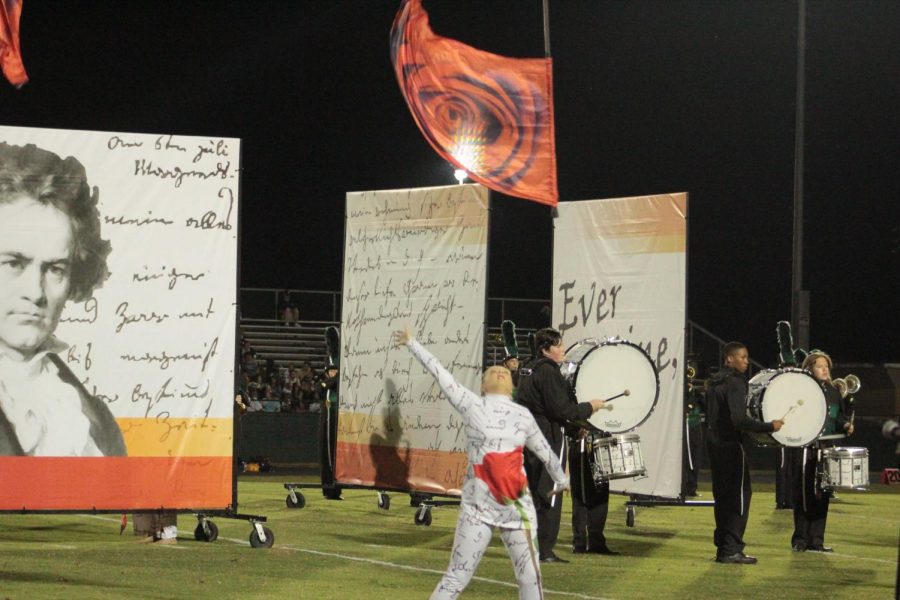Football Isn’t the Only Sport on Friday Nights: Color guard is a sport
Jenna Jordan showcases the talent required to perform in color guard. This activity finally needs the respect it deserves.
According to the Oxford online dictionary, a sport is defined as “an activity involving physical exertion and skill in which an individual or team competes against another or others for entertainment.” By definition, this makes color guard a sport.
Color guard is a group of people who toss, swing and let flags fly alongside the marching band. They perform choreographed routines that give a visual representation of the music being played by the band.
Throughout a three month season, the color guard team becomes a family. The members must work in perfect time to gain points for their performance. You don’t think it’s physically exerting? Try jazz running 20 yards in 16 counts, and see how you feel. Color guard requires muscle, tossing a flag 15 feet in the air isn’t as easy as it looks. The skill required to give enough force, push and pull, flick, find the right release point, hold it and catch it all while smiling is abundant.
Color guard has its challenges. The entire team has to be on the same wavelength at all times, otherwise, a performance can be ruined. Working together in such a way is difficult, and is oftentimes frustrating.
“No other sport has to be concerned with what foot their teammates are standing on. We do,” Color guard coach Brooke Gartley said.
The color guard team competes with the marching band at four competitions annually. This season our color guard placed first at all of them. It’s all based on a point system. The guard gains or loses points for how in-sync they are, their performance, their posture, their recovery, their timing and how difficult their work is.
“We can get injured just like any other sports player at West, only we have to keep going because there’s no one to replace us,” junior guard member Blake Dolph said.
Think your soccer bruises are cool? You should check out mine. You have a ball; I have a six-foot metal pole. You have practice? So do I. Color guard practices just as much as any other sports team. Hours and hours of time go toward a performance. I spend eight hours a week at practice, not including the hours put in cheering at the football games or the 14-hour competition days.
“It’s a sport because it takes a lot of practice, accuracy and energy to do it correctly,” senior color guard member Allie Klass said.
So why do people still think color guard isn’t a sport?
Color guard is not heavily covered in mainstream media. After college, unless you are good enough to be on a national team, the opportunities to be on a color guard team disappear. For nearly every other sport there’s always an open door. If you asked anyone to name a football, soccer, tennis or even golf player anyone could tell you. Cam Newton, Matthew Miazga, Serena Williams and Tiger Woods, but I bet they couldn’t name a single person from a drum corp.
All in all, the color guard has had a phenomenal and infallible season. Hard work and effort go a long way into putting on an amazing show for everyone else. Next time you see the “flag girls” out on the field, give credit where it’s due.

Jenna Jordan is a senior and third year writer for the Zephyr. This year she is thrilled to be co-editor-in-chief and continue to write for the opinion...

Ben Radspinner is a senior and third year photographer for the Zephyr. This is Ben's second year as the photography editor and he is excited to up his...








